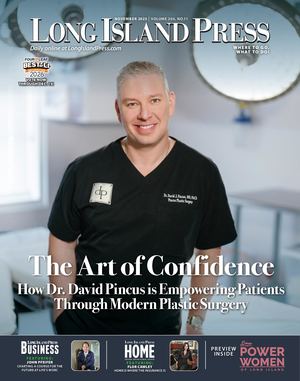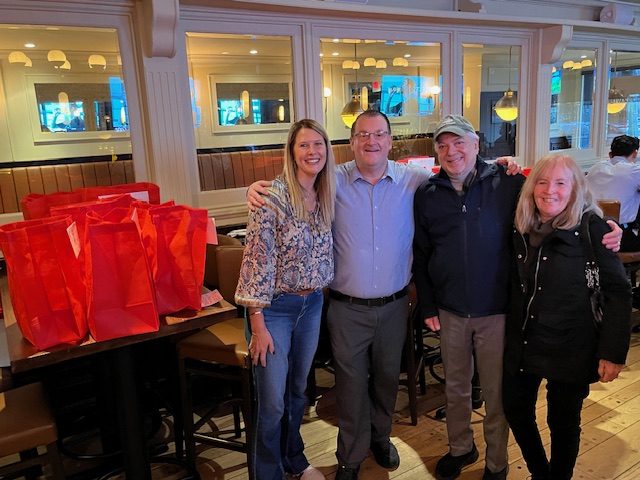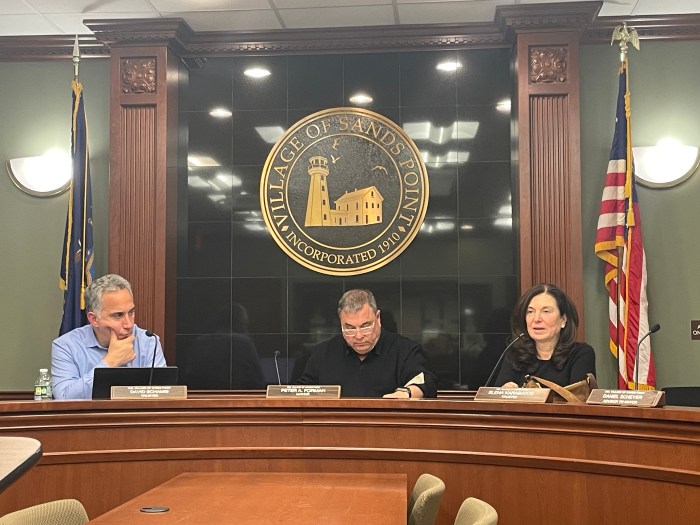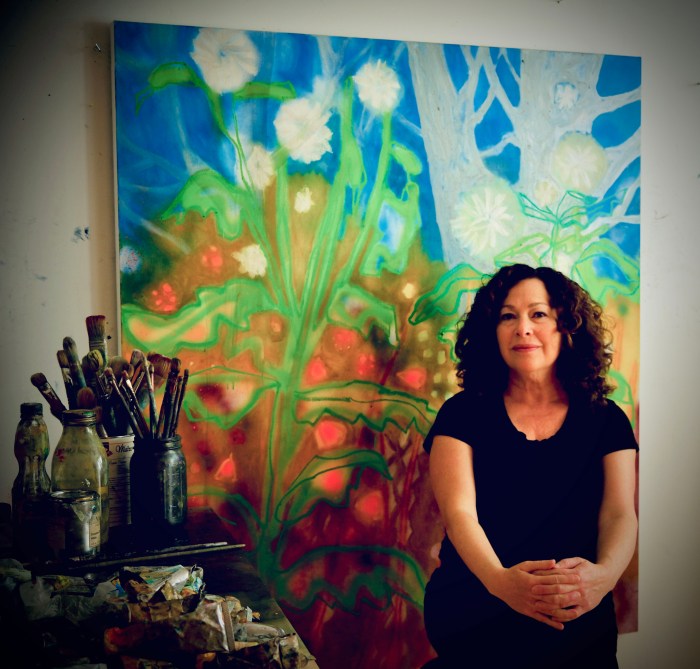The Port Washington North Board of Trustees voted to extend Bombay Kitchen’s conditional-use permit on a month-to-month basis, allowing the food manufacturing company at 85 Channel Drive additional time to complete installation of a new exhaust filtration system aimed at resolving persistent odor complaints from nearby residents on Tuesday, Oct. 14.
The food-production facility, which manufactures falafel and other snack products, has been under fire as neighbors in the Mill Pond Acres community have complained about strong cooking odors and noise from refrigerated delivery trucks arriving early in the morning.
The board agreed to keep the matter open for another month, giving the company until November 13 to complete the installation of a new exhaust filtration system and submit further documentation on its food production processes. The business has faced months of scrutiny over strong odors emanating from its facility, which several residents described as “offensive” and “industrial” in nature.
Company representatives, including attorney Michael Sahn and engineer Matthew Bendix of Bendix Engineering P.C., told the board that the facility’s new pollution-control equipment, designed to capture and filter cooking exhaust, was nearly complete and would soon be ready for testing under village supervision.
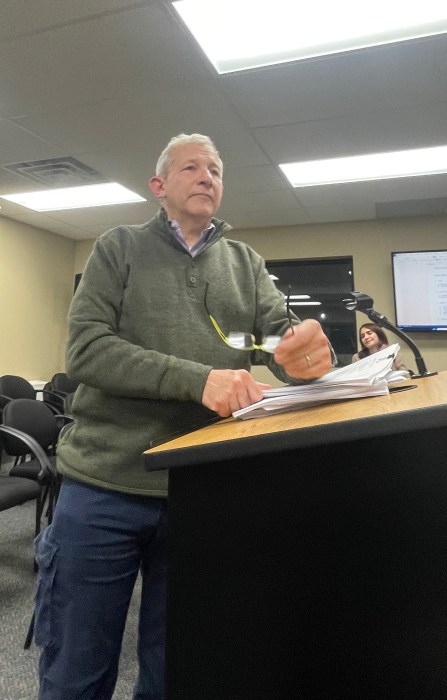
“We’re not going to restart production unless and until the system has been inspected and approved by the village,” Sahn said, emphasizing that the plant would remain idle until the air filtration system is proven to eliminate the odors that have drawn complaints for nearly two years.
Bendix added that the installation of the “precipitator pollution control unit” was expected to be completed within one to 10 days. Once complete, he said, the system would first be tested without active cooking before being demonstrated under full production conditions.
Despite the technical progress, trustees expressed frustration that the company had not provided definitive testing or third-party verification of the substances being emitted during the cooking process.
Bendix said multiple environmental and industrial hygienist firms had declined to conduct air testing, either citing the lack of specific targets or questioning the need for such analysis.
“They just don’t want anything to do with it because there’s nothing to test for,” Bendix said. “We even got a $70,000 proposal to test for volatile organics and particulates, but they started by asking, ‘Why are you doing this?’”
That answer did little to reassure board members, who said they still lacked sufficient data to explain the source and nature of the odors to concerned residents.
“A smell is created when you add something to the air,” Trustee Matthew Kepke said. “Our residents want to know what’s in that air. When I fry food at home, it doesn’t smell like that. This is an industrial-scale operation, and we need to be certain it’s safe.”
Trustees pressed the company to produce a clear and accessible report for the public that lists the foods being produced, the oils used in cooking, and any other substances involved in manufacturing, along with a professional statement affirming that the emissions are not hazardous.
The company’s attorney agreed that Bendix would compile a readable summary, supported by safety data sheets, ingredient lists, and a recent engineer’s report stating that the kitchen exhaust is “not classified as toxic or otherwise hazardous per code.” That report also included a Proposition 65 statement, a California health standard, confirming the absence of carcinogens in the company’s processes.
“Having something like that, with the engineer’s certification and the documentation attached, is exactly what we need to give residents confidence,” said Kepke, who has fielded many of the odor complaints. “It’s not enough to say, ‘We’re just cooking food.’ We have to be able to show this is safe.”
Following a lengthy debate, the board voted 3–2 to extend Bombay Kitchen’s conditional-use permit on a month-to-month basis, giving the company an opportunity to continue its work for an additional month so that the board can assess progress once the new exhaust system is fully installed.
Trustees Steven Cohen and Matthew Kepke voted against the extension, while Trustees Andrea Scheff and Michael Malatino joined Mayor Robert Weitzner in favor. The extension keeps the facility under the village’s close supervision, allowing for continued installation and testing of the odor-control system.
A cease-and-desist order remains in effect, prohibiting the company from resuming production until the village gives its approval.
“We’re holding their feet to the fire,” Weitzner said after the vote. “This isn’t about punishing them, it’s about accountability.”
The board reviewed updated design plans for the long-anticipated “Together We Play” inclusive playground, a collaborative project intended to serve children of all abilities. The new layout, created by H2M Architects + Engineers and Little Tikes Commercial, reflects months of adjustments to address environmental and accessibility concerns.
Early designs would have required removing much of the vegetated berm separating the park from Mill Pond Acres. The revised plan preserves most of that buffer, relocates parking toward the front of the site, and minimizes tree removal.
“We realized that the original layout didn’t take into account all the existing grades and vegetation,” Weitzner said. “We wanted to show that we’re still an environmentally conscious village.”
The playground will feature a mix of nautical- and nature-themed play structures, a zip line, and a new interactive sensory area called “Crickets,” which incorporates light, sound, and motion elements specifically designed for children with autism. According to the mayor, Port Washington North will be the first municipality in the U.S. to install the newly released Crickets system.
The village also unveiled a new logo for the project — a colorful, whimsical design featuring waves, a wheelchair symbol, and the slogan “Together We Play,” representing inclusivity and connection to the waterfront.
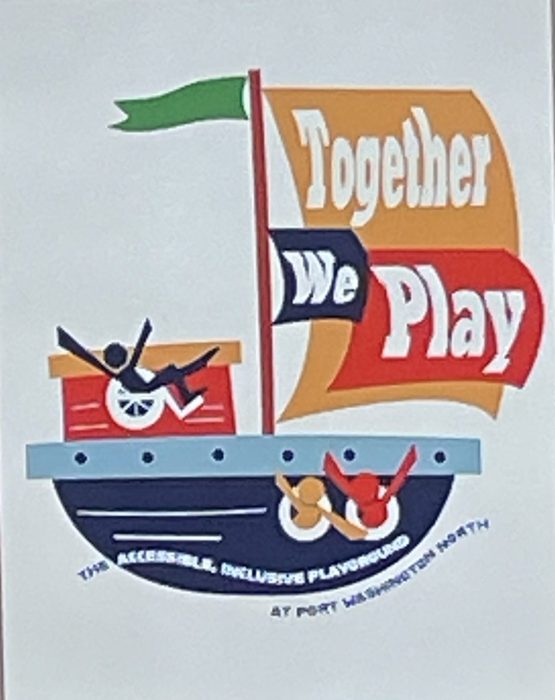
“I think it really captures the spirit of what we’re building,” Weitzner said. “It’s about accessibility, fun, and community.”
Cohen asked if the flag in the logo could be changed to the official Port Washington North color and flag. Weitzner said he had thought about the idea and would present the board with other renditions of a differently colored flag before finalizing the logo.
During the meeting, the board also introduced several new local laws for consideration, including one establishing hourly parking time limits at Bay Walk Park and another setting a maximum number of yard sales per residence per year. Public hearings on those proposals are expected to be scheduled at upcoming meetings.
The board also announced that its January meeting date has been changed to Jan. 20. The next board of trustees meeting will be held on Nov. 13.
